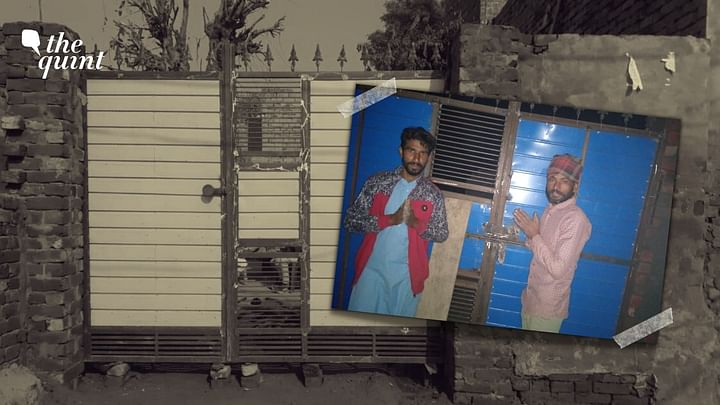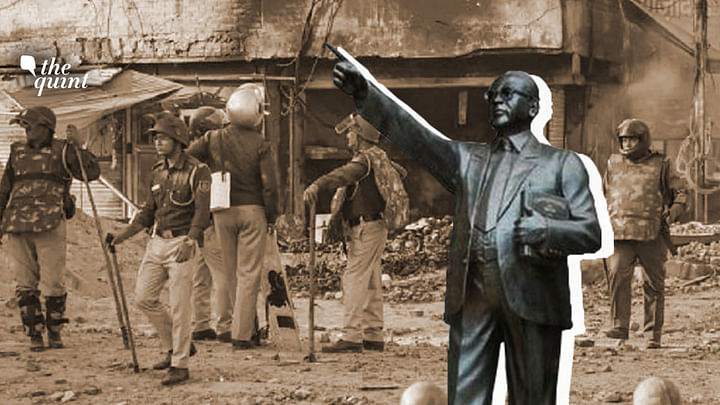Indian Dalits leave Hinduism in droves in blow to ruling BJP
Nikkei Asia ^Posted on 2022-11-06,
NEW DELHI -- Recent mass conversions to Buddhism by Indian Dalits have underscored anew the fears and frustrations of a community of about 200 million people considered to be at the bottom of the traditional Hindu caste system.
"We refuse to be punished any longer," said Ramji Lal, 34, who attended a conversion event in New Delhi on Oct. 5. He was one of a crowd of around 8,000, according to organizers, who made a point of leaving Hinduism. Such conversions are seen as a protest by people commonly known as "untouchables" due to their descent, leading to a life of exclusion and often abuse.
On Oct. 14, in the southern state of Karnataka, more than 100 Dalit men and women did the same, throwing pictures of Hindu deities into the Krishna River to renounce their faith.
Converting to Buddhism is not new for Dalits. Indeed, the Karnataka event came on the anniversary of social reformer B. R. Ambedkar's public conversion to Buddhism in 1956, a move that continues to reverberate generations later. "If you continue to remain within the fold of Hinduism, you cannot attain a status higher than that of a slave," Ambedkar said in a speech 20 years before he made the change, according to a collection of essays and speeches published on the Indian Ministry of External Affairs website.
In 2013, organizers of a conversion event in the state of Gujarat claimed that 60,000 people abandoned Hinduism at once, local media reported at the time.
The trend stands out given the Hindu nationalism of Prime Minister Narendra Modi's government, and raises further questions about the ruling Bharatiya Janata Party's (BJP) record on human rights, which is already under scrutiny for alleged discrimination against Muslims, an accusation the BJP denies.
The BJP appears to have mixed views on such conversions, but after the Oct. 5 event in the capital, parliamentarian Manoj Tiwari tweeted that the event was "anti-Hindu," and criticized a Delhi legislator and minister from the Aam Aadmi Party (AAP) for attending. The Delhi BJP chief urged the AAP, which runs the capital territory government, to sack the minister, Rajendra Pal Gautam, "for his attempt to stoke communal tensions and spread hatred along religious lines within the country."
BJP & the Hindu Right: Are Dalits as Much a ‘Common Enemy’ as Muslims?

Many have suggested that the Bharatiya Janata Party (BJP) has improved from being an upper-caste party. The post-2014 BJP has emerged as an umbrella organisation that ‘allows’ Dalit-Bahujan sections to become an influential part of its political mobilisation. The BJP has influenced sections within the Dalits by executing smart socio-cultural strategies. Further, by invoking Babasaheb Ambedkar as a nationalist icon and by promising that the government will follow the constitutional mandate in defence of social justice policies, the right-wing has built an effective connection with Dalits.
However, the rise of caste atrocities and the growing police action against Dalit activists demonstrate that Hindutva lacks sincerity in dealing with the Dalit agenda. Instead, by raking sentimental issues against Ambedkarite Dalit activists, a systematic public antagonism is manufactured against them.
Snapshot
In the same way as Muslim issues help Hindutva forces form communal ‘unity’, the ‘othering’ of the Dalits at the social level helps the right-wing consolidate its traditional base.
The current BJP regime uses Ambedkar as only a symbolic artefact, divorcing him from his radical and revolutionary ideas.
The Hindu right-wing projects conscious Dalit agents as the ‘social other’.
Expecting that a Hindutva-driven regime will facilitate a sensitive discussion about Dalit problems and class concerns is wishful thinking.
For the Hindutva camp, the idea of a robust Dalit who possesses a strong socio-political consciousness and is ready to challenge the conventional authority, as Ambedkar did, will always be a threat.
Was Congress More Sensitive to Dalit Issues?
The Dalit movement is inspired by Ambedkar’s social thoughts and political ideas. His writings and speeches on a caste-based social order, Hindu religion, patriarchy and classical Sanskrit texts open a rational and serious debate to understand the precarious conditions of the untouchables in India. Ambedkar is known not only for his reformist zeal that challenged the caste system, but also for his radical transformative thoughts. He envisaged a complete destruction of the base structure over which the Hindu caste citadel has been erected.
Also Rea
‘Family iIn Safe House Due to Threats’: Dalit Scholar Fighting Google on Caste
Ambedkar’s conversion to Buddhism has been upheld as a ‘revolutionary’ act. He pledged that the new converts will offer an agnostic distancing and critical inquiry towards social rituals, Hindu Gods and Brahmin priests. In his writings and speeches, Ambedkar courageously reprimanded and dissected Hindu religious legends and thoughts to test their applicability in building social ethics. He elevated the stature of the former ‘untouchables’ and helped them become robust political agents, inspiring them to claim their economic and political rights fearlessly.
Importantly, the nationalist elites of the Congress viewed Ambedkar’s critical inquiry as a righteous approach to examining the social virus that has contaminated the Hindu order.
Ambedkar’s prominent role in the making of the Constitution suggests that the political elites were keen to understand caste problems and wanted to eliminate the brutal practice of untouchability.
How Dalit Radicals Joined the Mainstream
The post-Ambedkar social and political movement heralded Ambedkar’s radicalism and offered it a new life. The last political party that Ambedkar formed, the Republican Party of India, used secular or Buddhist symbols to mobilise vulnerable castes and communities and was critical of Dalits that retain allegiance to Hindu rituals and customs. The Dalit Panthers’ movement in the late 1970s published a revolutionary manifesto that denounced the hegemony of social elites over social and political spheres and challenged religious scriptures for dehumanising the lower castes. The arrival of the Bahujan Samaj Party (BSP) in north India further elevated the critical stance towards the Hindu social order and belittled the authority of the social elites.
Also Read
A Dalit Man's 20-Year Struggle for a Gate and a Road in Punjab Village

In various social and political spheres, the Dalit movement highlighted their precarious social conditions, issues of caste discrimination and economic exploitation, and staged a rational and radical opposition. Even though Congress regimes were apprehensive of Dalit critics, they refrained from issuing criminal warrants or bracketing them as the ‘enemy camp’. Instead, many popular Dalit radicals joined mainstream political parties (not only Congress but also the Shiv Sena – the revolutionary poet Namdeo Dhasal had joined the Sena).
What Is Hindutva’s Dalit Agenda?
But the current Hindutva-driven regime has not shown a similar sensitivity. It uses Ambedkar as only a symbolic artefact, divorcing him from his radical and revolutionary ideas. Today, Dalit protests are often condemned as uncivil, criminal or even ‘anti-national’. The arrest of scholars and social activists like Anand Teltumbde underlines the growing hostility of the state towards Dalit activism. Recently, police booked a Dalit faculty member of Lucknow University for hurting religious sentiments. Similarly, professor Ratan Lal of the prestigious Hindu College at the Delhi University was arrested for a satirical social media post on the Gyanvapi mosque row.
Also Read
‘Bhimti Hai Kya? Kaat Daalo’: The Anti-Dalit Side of Delhi Riots

The right-wing is insensitive when it comes to dealing with Dalit socio-political claims. It hardly offers a crucial road map to ensure substantive Dalit participation in state institutions, or to execute policies that examine the problems of caste atrocities. Instead, it often defends the perpetrators of caste violence and legitimises the use of coercive state actions when the Dalit protests in rage.
In April 2018, 14 people belonging to marginalised communities died due to police action while participating in protests to defend the Scheduled Caste and Scheduled Tribe (Prevention of Atrocities) Act, 1989.
The state’s antipathy towards Dalit tragedies is further visible in the Rohith Vemula case, the Una flogging case, the Bhima-Koregaon protest movement and the Hathras rape-murder case.
Further, the recent arrest of legislator Jignesh Mevani on flimsy grounds only underlines the fact that the BJP regime has developed a vengeful psyche against Dalit issues and activists.
Hindutva proponents often demean Dalit-Bahujan voices as irreligious or see them as contempt against the Hindu civilisational ethos. The Hindu right-wing projects conscious Dalit agents as the ‘social other’. In the same way as Muslim issues help Hindutva forces form communal ‘unity’, the ‘othering’ of the Dalits at the social level helps the right-wing consolidate its traditional base.
The Mirage of 'Subaltern' Hindutva
The post-Ambedkar Dalit movement belongs to the rich heritage of non-Brahmanical traditions and upholds the modern constitutional values of social justice. Dalit-Bahujan thoughts supplement Buddhist principles, herald the egalitarian teachings of Guru Nanak, Kabir and Chokha Mela, and find inspiration in the radical ideas of Mahatma Jyotiba Phule, Periyar and Ambedkar. This school of thought offers alternative sources of knowledge and dynamic liberal perspectives that enrich the democratic fabric of new India. It is this transformative ideological spectrum that has consistently been critical of the ruling socio-political elites for keeping Dalit-Bahujan masses poor, alienated from power and undignified in social relationships.
Also Read
‘Can’t Build a Nation on Caste’: What Ambedkar Meant By Equal Representation

For Hindutva proponents, the Dalit-Bahujan ideological school is a bête-noir that shall be clamped down by coercive and violent means. Though the BJP has embraced the Dalit constituency to expand its social base, it remains just a political strategy that has little impact or care for changing the conditions of these groups.
Expecting that such a Hindutva-driven regime will facilitate a sensitive discussion about Dalit problems and class concerns is wishful thinking. For the Hindutva camp, the idea of a robust Dalit, who possesses a strong socio-political consciousness and is ready to challenge the conventional authority, as Ambedkar did, will always be a threat.
(Dr. Harish S Wankhede teaches at Centre for Political Studies, JNU, New Delhi. He writes on identity politics, Dalit questions, Hindi cinema and the new media. This is an opinion piece and the views expressed above are the author’s own. The Quint neither endorses nor is responsible for them.)
SEE
No comments:
Post a Comment